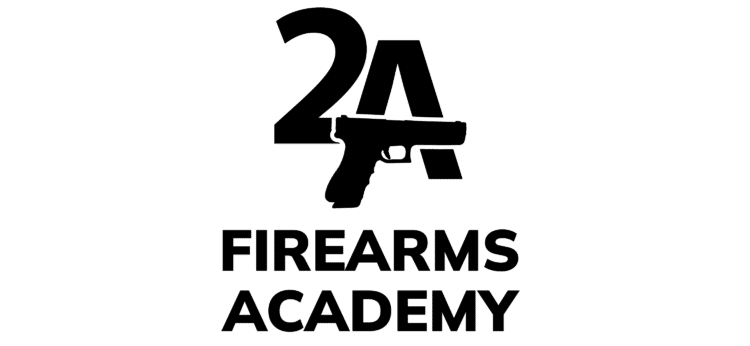How You Could Lose a Gunfight
Understanding the concept of a “combat mindset” has long been a goal for those interested in self-defense. In a moment of genuine threat, what mental preparation makes the difference between survival and tragedy? A successful defense involves much more than physical skills; it’s deeply rooted in mental conditioning.
While there’s no one-size-fits-all formula, two core components of mental preparedness stand out. The first is situational awareness. If you’re not aware of what’s happening around you, you’re already at a severe disadvantage. You won’t recognize a threat until it’s too late to react effectively. The second essential component is a willingness to act. Mental preparation isn’t passive; it requires a readiness to respond decisively if danger presents itself.
John Steinbeck captured this idea perfectly, stating, “The final weapon is the brain. All else is supplemental.” In any high-stakes situation, if you aren’t mentally prepared, the outcome could easily be unfavorable. A common mistake people make is placing too much emphasis on equipment or training without equally prioritizing mental readiness. At best, a firearm is a tool, an extension of your will, and its effectiveness depends heavily on your mindset. Possessing a firearm or training skill alone will not protect you if you lack the mental awareness to notice a potential threat or the readiness to take action.
Situational awareness, as the cornerstone of personal safety, is often what keeps you out of harm’s way. Being vigilant and aware can help you detect early warning signs of a problem, giving you time to make calculated decisions. If a defensive response is necessary, being “switched on” ensures you’re more likely to respond effectively and in a timely manner. Awareness is the bedrock of street survival, preparing you to recognize and respond to threats before they become unavoidable.
Developing the “Switched-On” Mindset
Effective situational awareness isn’t about paranoia; it’s about preparation. Colonel John Boyd’s OODA loop—Observe, Orient, Decide, Act—is an invaluable framework for staying engaged in your environment. Originally derived from Boyd’s experiences as a fighter pilot, the OODA loop is just as applicable to personal defense. It emphasizes that quick observation and decision-making often mean the difference between success and failure in a conflict. By cycling through these steps as efficiently as possible, you can gain control of a situation before a threat escalates.
Consider a scenario: late at night, you spot someone approaching you on a quiet street. They seem to be intentionally closing the distance, and you cross the street to create space. Then, you notice they also cross the street. While it could be coincidence, it’s more likely a sign of intent. Thanks to your awareness, you’re now able to assess and act. Do you take evasive action, put your hand near your concealed weapon, or prepare a verbal deterrent? You must have a plan in mind before this happens in real life. These moments often play out in mere seconds, but that critical time can make all the difference if you’re alert to the threat early.
Understanding Situational Awareness: The Color Code
A popular model for situational awareness is Colonel Jeff Cooper’s “Color Code,” which breaks down mental states according to levels of alertness and preparedness. The four stages are:
- Condition White: Completely relaxed, without regard for surroundings or potential threats. This state is risky in public or unfamiliar environments.
- Condition Yellow: Calm yet aware, tuned in to your surroundings. You’re not tense, but you’re paying attention to anything unusual.
- Condition Orange: Focused on a potential threat, actively assessing its significance. In this state, you’re ready to act if necessary.
- Condition Red: Recognizing an imminent threat. At this point, you’ve mentally committed to respond if an aggressive move is made, whether that means taking a defensive position, retreating, or drawing your weapon if it’s lawful and necessary.
Maintaining condition Yellow, the ideal level of alertness, is essential in public places, but it isn’t about always being on high alert. The goal is realistic attentiveness—being aware of who and what is around you without being hypervigilant. For example, in situations where threats are statistically more likely, such as parking lots at night or busy public spaces, adopting Condition Yellow increases your preparedness. When you notice someone lingering too close or following your movement, Condition Orange is a reasonable escalation, allowing you to sharpen your focus on the situation.
One helpful habit is scanning your surroundings when entering a new space. For instance, take a quick look when you step into a store, bank, or other public building. Make it a habit to locate exits and observe the people in the room. This simple practice can help you avoid becoming a “soft target,” a person who appears unaware and therefore vulnerable to a would-be attacker.
Preparedness Versus Paranoia
Carrying a firearm or other defensive tool doesn’t mean you’re seeking trouble. Realistically, if you genuinely expected danger, avoidance would be the best choice. But because life doesn’t offer guarantees, having a strategy and carrying protective gear can be part of a balanced, proactive approach to safety. High-profile incidents have shown that violence can emerge unexpectedly, even in what we perceive as safe spaces like theaters, houses of worship, or even commuter trains. Avoiding known trouble spots is always wise, but not every danger can be anticipated.
Let’s say you encounter an unavoidable threat. Staying calm and having a pre-planned response increases your chance of survival. If a chaotic situation were to unfold in a matter of seconds, knowing your next move can save precious time. If your environment shifts and you spot the signs of escalating danger, you should be ready to either exit the area or respond with your defensive tools if there’s no safe escape.
In summary, effective self-defense is a blend of mental awareness and readiness. Your best protection is your ability to assess situations in real-time and act accordingly. Tools and techniques only supplement your safety if your mind is engaged, alert, and prepared to respond.
